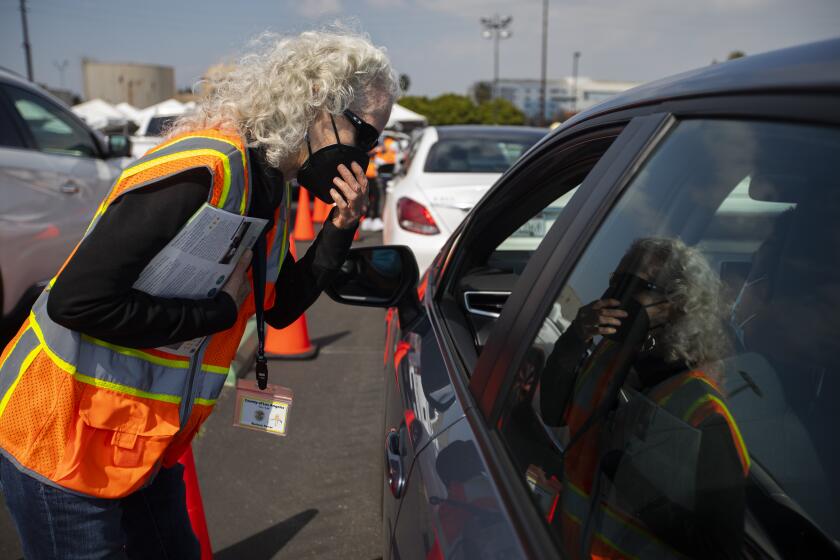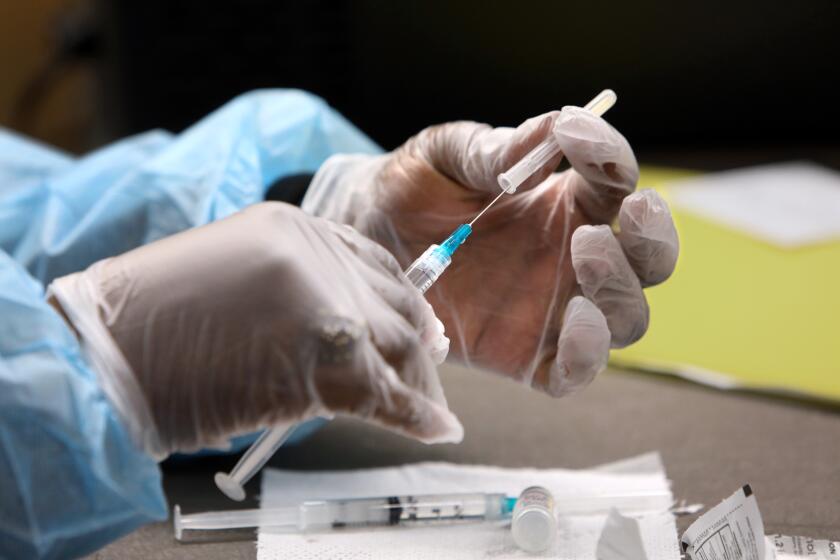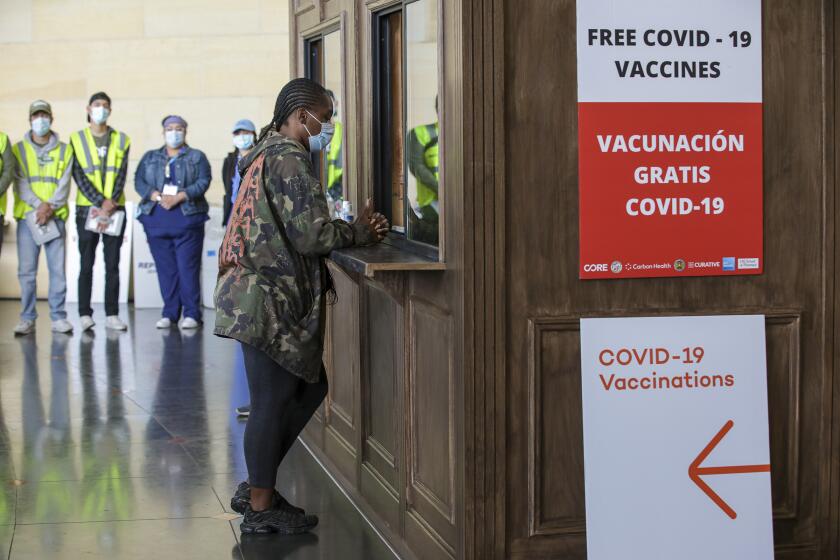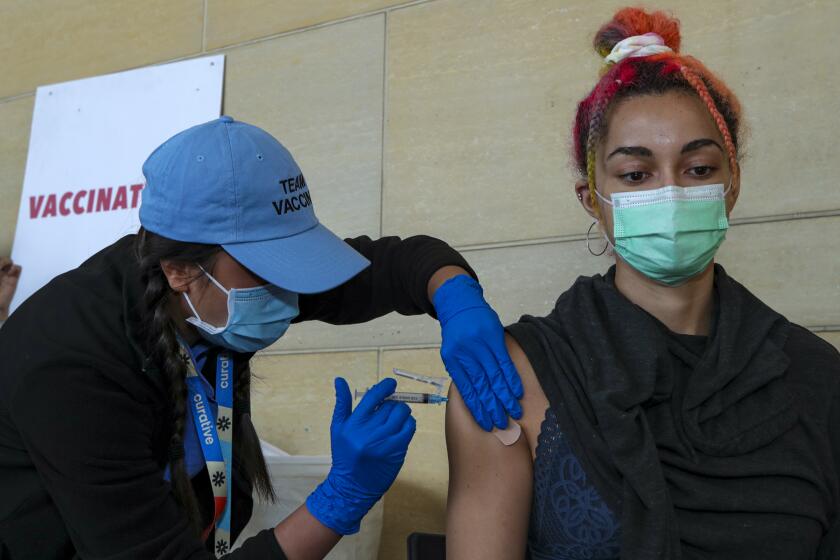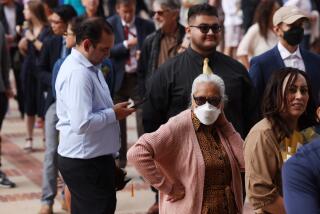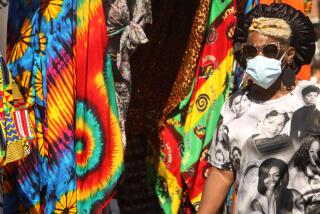With Delta variant on the rise in L.A. County, vaccinations urged
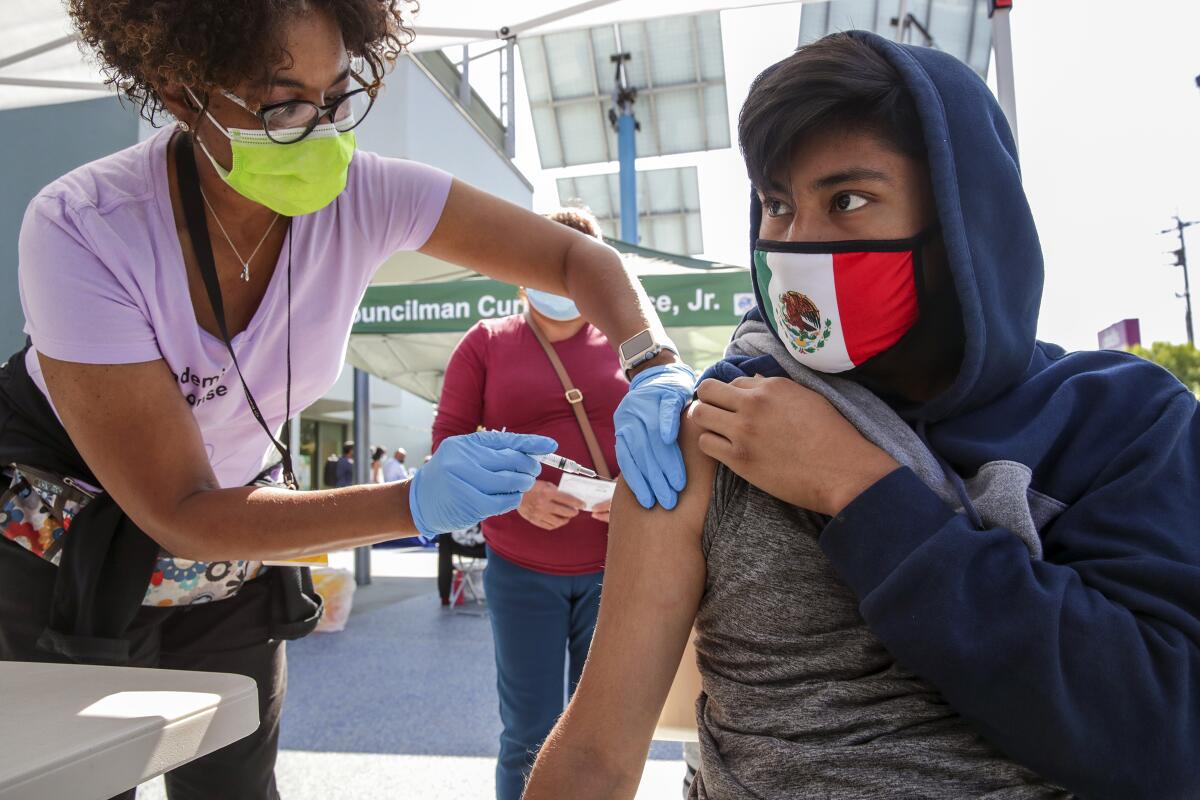
Confirmed cases of the highly contagious Delta variant of the coronavirus are on the rise in Los Angeles County, prompting renewed calls for residents to take advantage of the available vaccines.
While COVID-19 case, hospitalization and death rates remain low countywide, this particular variant ‚ÄĒ which could be two times as transmissible as the conventional strain ‚ÄĒ presents particular risk of prolonging the pandemic, which would primarily affect those who have yet to get their shots.
‚ÄúThis is a pandemic of unvaccinated people,‚ÄĚ L.A. County Public Health Director Barbara Ferrer said during a briefing Thursday.
California is contending with what could be the most contagious coronavirus variant to date, prompting officials to warn that residents face significant risk if they are not vaccinated.
Of the 123 people confirmed to have been infected with the Delta variant in L.A. County, 110 were unvaccinated and three were partially vaccinated. There were two hospitalizations among people in this group.
By comparison, variant cases have been found in 10 fully vaccinated individuals, none of whom ended up needing that level of care.
‚ÄúIf you are fully vaccinated, you have a lot of protection,‚ÄĚ Ferrer said. ‚ÄúAnd for the very small numbers of people that may end up in fact with a breakthrough vaccination case, they really did not have serious illness.‚ÄĚ
That‚Äôs especially key as the Delta variant ‚ÄĒ which is also known as B.1.617.2 and was first identified in India ‚ÄĒ continues to spread. The latest report of 123 cumulative cases is up markedly from the total of 64 that the county disclosed last weekend.
If scientists discover that immunity to the coronavirus starts to wane months or years after vaccination, a booster shot could be deployed.
That figure is not without caveat, however. When it comes to the sequencing that’s done to identify variants, different labs report those results on different timeframes.
‚ÄúWe‚Äôre a little bit at the mercy of the labs that are reporting this information to get the data,‚ÄĚ Ferrer said. ‚ÄúSo these jumps just happen because, you know, one lab that didn‚Äôt report for three weeks all of a sudden gives us the sequencing on their specimens. And that‚Äôs really what you‚Äôre seeing.‚ÄĚ
That‚Äôs not to say the figure is meaningless, because Ferrer added: ‚ÄúWe‚Äôve had a lot of increase in the circulation of the Delta variant.‚ÄĚ
Of the county’s Delta variant cases, 49 were found among residents of the Antelope Valley cities of Palmdale and Lancaster. Fourteen of them came from one household.
Overall, 372 people are known to have been infected with the Delta variant statewide, according to figures from the California Department of Public Health.
‚ÄúThe Delta variant is more contagious, it‚Äôs deadlier, and it‚Äôs spreading quickly around the world ‚ÄĒ leaving young, unvaccinated people more vulnerable than ever,‚ÄĚ President Biden wrote on Twitter on Thursday. ‚ÄúPlease, get vaccinated if you haven‚Äôt already. Let‚Äôs head off this strain before it‚Äôs too late.
More than 60% of Californians have now received at least one dose of COVID-19 vaccine, federal figures show ‚ÄĒ the latest milestone in the state‚Äôs vaccine rollout.
Although 67% of L.A. County residents ages 16 and older have received at least one dose, and 58% are fully vaccinated, officials warn that less-inoculated communities will remain exposed to potential outbreaks.
‚ÄúWhere there are pockets of unvaccinated individuals, these variants can proliferate,‚ÄĚ Ferrer said.
Continued COVID-19 spread also presents a risk to those who either can’t be vaccinated because of a medical condition or their age, as well as those who are immunocompromised and don’t get the same sort of protective response from the shots.
Some slight warning signs are starting to emerge.
After a long and welcome slide, Ferrer said L.A. County is starting to observe ‚Äúvery small increases in cases, hospitalizations and daily test positivity.‚ÄĚ
A Times analysis found that L.A. County’s average daily number of new coronavirus cases fell to a low of 162 for the seven-day period that ended June 3, the lowest such number in more than 14 months.
Since then, there’s been a slight uptick. For the seven-day period that ended Wednesday, L.A. County was averaging about 190 cases a day.
Countywide COVID-19 hospitalizations fell to a new low, 212, on June 12. That number has since risen to 234.
The Delta variant, also known as B.1.617.2, was identified in India but has since been found in 60 countries. It’s thought to be more transmissible.
Ferrer said the county is watching the trends.
‚ÄúSmall increases can just really be a little bit of noise, and this can all settle down, or they can be, in fact, a real sign that there‚Äôs been some slight increase in community transmission,‚ÄĚ she said.
But Ferrer suggested workplaces do more than the minimum required by the state to keep transmission low. For instance, if factory owners are aware that they have a significant number of unvaccinated workers, it would be a good idea for them to keep partitions in place to help reduce spread of disease.
She also suggested that employers be proactive in giving respirators ‚ÄĒ such as N95, KN95 and KF94 masks that filter out very tiny particles in the air ‚ÄĒ to unvaccinated workers.
The latest maps and charts on the spread of COVID-19 in Los Angeles County, including cases, deaths, closures and restrictions.
Ferrer said she’s not concerned the recent uptick in cases is a precursor to a surge. But she does worry the latest data could signal that disproportionately low vaccination rates among some communities, such as Black residents, are beginning to result in slight but perceptible increases in disease transmission.
In L.A. County, 44% of Black adults and 53% of Latino adults have received at least one dose of vaccine, compared to 65% of white adults, 61% of Native American adults and 74% of Asian American adults.
‚ÄúI want to make sure that we address any disproportionality early on by identifying those places where we‚Äôre seeing pockets of increase,‚ÄĚ Ferrer said.
More to Read
Sign up for Essential California
The most important California stories and recommendations in your inbox every morning.
You may occasionally receive promotional content from the Los Angeles Times.
